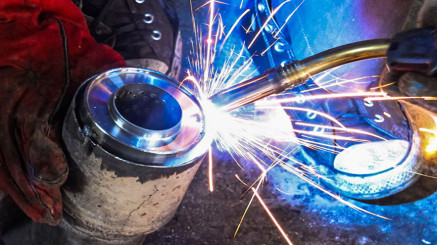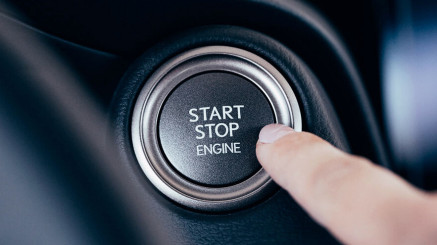Top 5 Cars with Problematic Steering Racks

Driver Opinion vs. Mechanic Opinion
When a driver considers purchasing a used car, they often examine various car models and get to know their features. However, many drivers overlook certain parameters, such as how often their steering system experiences failures. Drivers and auto mechanics debate whether there is a connection between the car brand and frequent steering system issues. Let's clarify this question.
Top 5 Cars with Less Than Ideal Steering Systems
We gathered the most common complaints from drivers on forums, and now let's hear what auto mechanics have to say. Here are the top 5 cars with "weak" steering systems.
Renault
Drivers: Hydraulic power steering constantly breaks!
Mechanics: Not entirely true. The Renault Kangoo with electro-hydraulic power steering is based on a fundamentally flawed design decision. The steering assistance is installed in the wing arch, and the mud flaps in this model are not secured, leaving the assistance exposed to external influences like water and dirt. Electro-hydraulic power steering in this model experiences issues with connectors, plates, and eventual failure.
Renault Traffic and Renault Master (commercial transport) have a chronic problem — the rear cover pump plug tends to break. This occurs because the housing is made of duraluminum, while the plug is made of stronger black metal. When the housing oxidizes (which happens if the car owner likes to wash the engine), the plug is ripped from the cover during movement.
Honda
Drivers: Honda's steering system knocks and breaks more often than in other cars!
Mechanics: Partially true. Starting around 50,000 kilometers, the steering system may start knocking and leaking (if it has hydraulic power steering). However, catastrophic issues are not common with this car brand.
In the electric steering of Honda with electro-hydraulic power assistance, the connections of the steering system's electrical components or pump are poorly secured. The connection may be on or off intermittently. The driver might think the device is malfunctioning, although, in reality, the plug contacts have simply disconnected.
KIA Rio:
Drivers: In Kia, the steering system breaks very quickly, starts squeaking, becomes loose — you have to constantly tighten it!
Mechanics: The real problem with this car, like many Korean models, is that over time, the force applied to the steering wheel becomes uneven: for example, the wheel turns left with more effort and right with less. These are distributor issues.
The interesting part is that cars already leave the assembly line with an imperfect distributor. The manufacturer knows about it, as do official representatives and dealers. The first cars where this feature appeared during the warranty period were repaired by official representatives.
Later, official representatives realized they were not interested in changing the distributor assembly under warranty for every consecutive car. That's when they started offering the purchase of a distributor, the cost of which was equal to the cost of a new non-original transmission. Not entirely fair, right?
Opel
Drivers: In humid weather, electric assistance constantly turns off!
Mechanics: Opel Vectra has the same ailment as Renault Kangoo — electro-hydraulic power steering is also placed in the wing, unprotected from constant interaction with water and dirt, leading to rapid damage.
However, there is one nuance. Opel has a torque sensor that activates when the ignition is on. Often, the situation occurs where the pump itself works perfectly, but the sensor fails due to constant exposure to water. Regular replacement of this sensor is necessary. In Renault Kangoo, this sensor is absent, making life a bit easier for it.
Ford Focus - Tops Our List
Drivers: After a short run, knocking appears, the transmission breaks faster than in other car models!
Mechanics: Yes, indeed, the steering system is its Achilles' heel, for both the first, second, and third-generation Focuses. In general, Fords have weak transmissions, such as the Ford Mondeo 4.
Ford Focus 3 has a transmission with electric drive. If water gets on it (which is unavoidable), the transmission simply says "It's over!" and completely shuts down, displaying "Check steering" on the control unit. Even if you restart the engine or disconnect the clamps, this error will not be reset.
Ford Focus 2 is also challenging in terms of repair:
- The hydraulic power steering pump is poorly located, making it inaccessible.
- The transmission is weak, knocking after every small bump, and the internal housing can detach.
Steering system problems in Ford are like a snowball effect — if one malfunction occurs, accompanying faults will be detected in diagnostics. Often, you have to change the transmission, pump, high-pressure hoses, and the reservoir — meaning the ENTIRE steering system, the cost of which may be like the value of the car itself (if you bought it used). Unfortunate, isn't it?
In defense of Fords, it can be said that part of the blame for imperfect steering lies with the drivers themselves. If you decide to buy a Ford, you must understand that you need to drive carefully. Some drivers think that American quality is not afraid of ditches and bumps. That's a mistake. American and European cars do not tolerate off-road conditions, and such cars must be looked after.
Additionally, Ford's commercial and semi-commercial transports are sturdy workhorses, and their transmissions are surprisingly reliable, such as the Ford Transit or Ford Transit Connect.
This concludes our list of the top 5 cars with problematic steering systems. We're not campaigning for or against any specific car — whether to take it or not is ultimately your decision.






